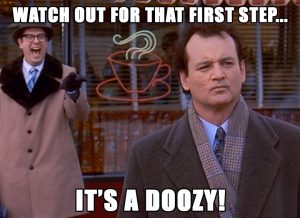Over the past 8 years I have helped dozens of clients establish a stronger internet presence. Much of this revolved around the creation of social media channels but also included the implementation of several Google products such as Analytics, Google+ and Google Local or as it is known today, Google My Business.
In more than a few of these situations, my clients had already made an attempt to do this on their own before engaging my help. And in each case, the set up became the largest point of frustration. So much so that most just gave up on it. As I worked to diagnose the issues I found a few common missteps that occur in the early stages of the set up process which caused the frustration. So if you are going to do this on your own, you must be careful with your first step as it will likely determine your success for the long run.
 Here are a few tips to help!
Here are a few tips to help!
A critical first step is the creation of a “generic” email account. I highly recommend a gmail account such as yourbusinessname@gmail.com. Most of the Google products work better if you have a separate account for them. Plus, if you have a generic gmail account, you can share access to this with other members of your team or agency without compromising the security of your business email account. It is this first step that is almost always overlooked and thus the reason for the title of this article.
Second, it is really important to know the difference between a personal profile and a business profile. On numerous occasions I’ve noticed that many businesses set up their social accounts the same way they set up personal ones. The root cause of this is a concern for separating personal activity on Facebook from business activity. As a result, the features and functionality available to businesses get lost since the account is set up like a person. For example: A Facebook business page should not be created as a personal profile. Instead, the business owner should “Create A Page” from their personal account and set up using the wizard provided by Facebook. This allows the business page to have an administrator and other managers of the page. It also allows for an easier transition to the Facebook Business Manager. Additionally, a Facebook business page has lots of great functionality with their advertising platform, publishing options and community growth features.
But it’s not the same for each network or product.
Twitter works differently. Each Twitter handle has 1 user name and password which can be shared if you have a team of people tweeting from the account. I highly recommend setting this up with the generic gmail address as well so each team member can access emails generated with the use of the Twitter account.
LinkedIn works much like Facebook as each business page should be set up by a personal profile. Multiple administrators can be added to the business page for more effective management and publishing.
When using any product in the Google Marketing Suite, I recommend starting with the generic gmail address. This applies for Google+, Google My Business, Google Analytics, AdWords and even YouTube.
My third and final tip for this article is to think long term. Please remember that no matter how your business plans on using these marketing channels at the start, your strategy and tactics will evolve. Each platform has a plan to add features and functionality which you will want to take advantage of.
Even with these tips, it is important to have help and guidance from a trained professional. Yes, the first step is a doozy and getting started on the right foot is critical. But there are more potholes ahead! So plan your strategy wisely, get help if you can and do your best to think long term so you keep your options open.
